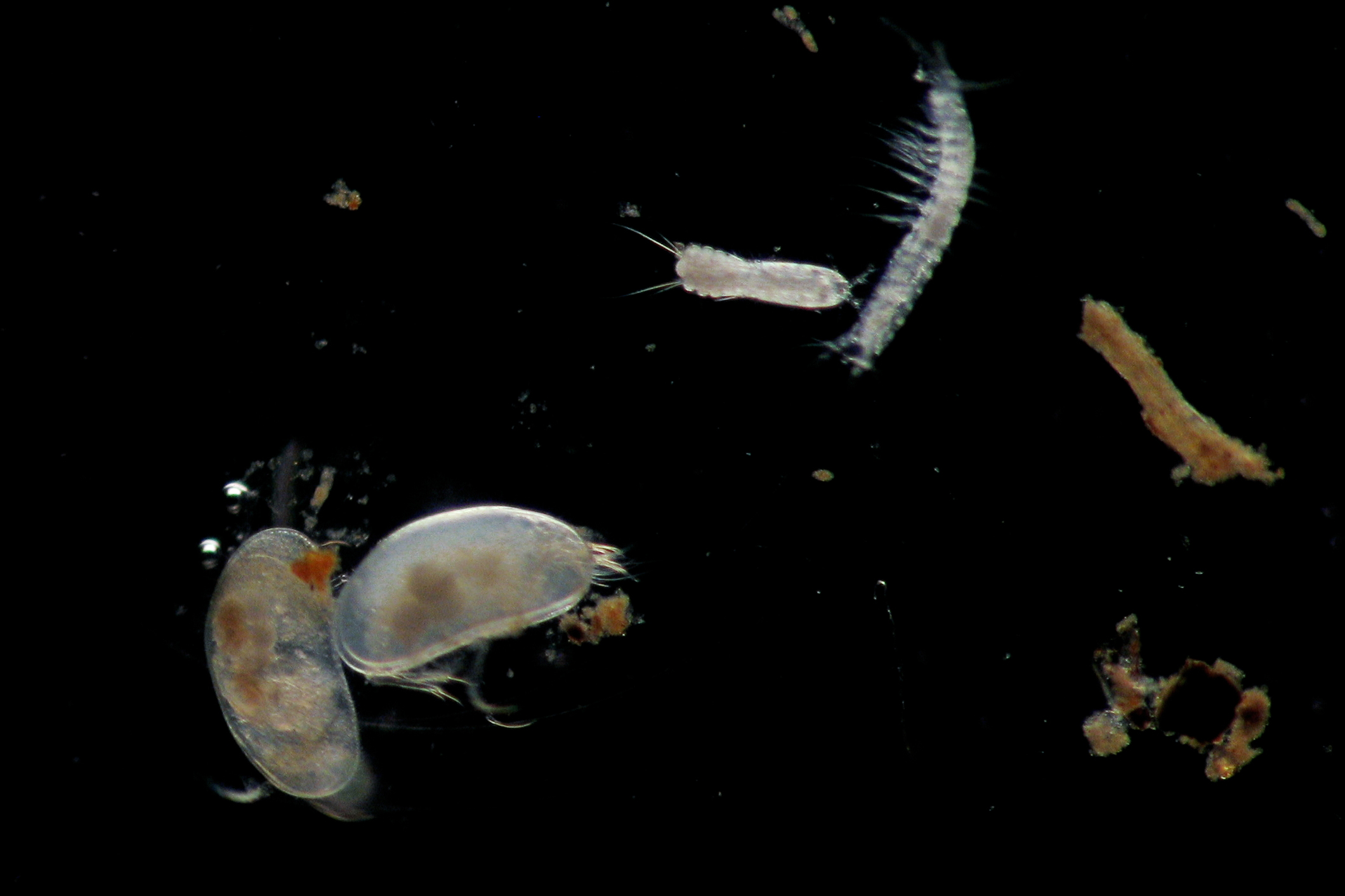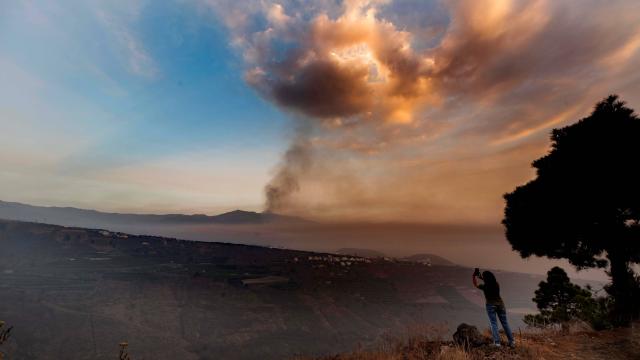

Groundwater research is detective work
Everyone uses it, but very few know much about it. The underground water that fills the cavities beneath the ground: our groundwater. It is, after all, the most important source of drinking water. It is formed by precipitation that seeps into the ground and supplies soil and plants with moisture, among other things. Groundwater is an essential element in the water cycle – and at the same time an ecosystem with a diverse community of organisms. The organisms living there contribute to drinking water quality through material and energy cycles.
But what animal species live in groundwater? How can this be determined? And what conclusions can be drawn when the populations of a species change? Klaus Schwenk and Hans Jürgen Hahn are investigating these questions.
Who lives in groundwater?
When asked what one of the biggest challenges in their research is, it quickly becomes clear that it is primarily the external characteristics of groundwater animals. Due to the confined space, very small organisms live down there. The permanent darkness also contributes to the development of species that appear rather unspectacular at first glance.
Morphologists, i.e., researchers who study the structure of organisms, have a difficult time with groundwater, says Hans Jürgen Hahn. “The animals living there are very uniform in structure.” Klaus Schwenk adds: “And then the taxonomists are dying out.” These are the experts who can identify an animal based on its external characteristics and assign it to a species. According to Schwenk, there is a growing shortage of specialists in this field.
In addition, Schwenk and Hahn's team repeatedly encounters so-called cryptic species. This is the term biologists use to describe a group of organisms that are indistinguishable in appearance but cannot reproduce sexually with each other. Since an important criterion for defining a species, namely reproductive capability, is not met, organisms in this group cannot be assigned to one and the same species. “Ultimately, such cryptic species can often only be correctly classified by looking at their genetic makeup,” says Klaus Schwenk. The good news is that this is now easily possible with modern genetic engineering methods. Klaus Schwenk is an expert in this field: “DNA barcoding” is the name of the process used to determine the genetic characteristics of an animal and assign it to a species based on this information. “The distinctive feature is the sequence of the four building blocks,” i.e., the bases adenine, guanine, cytosine, and thymine, which make up the genetic molecule DNA.
To obtain specimens for examination, Schwenk and Hahn's team first take samples from the groundwater. They collect the animals from the bottom of the groundwater measuring points using plankton nets or pumps. “But we can also obtain samples from springs where the groundwater comes directly to the surface,” reports Hahn.
“Once the animals are in our laboratory, we extract their DNA,” explains Klaus Schwenk. He adds that, in addition to ‘capturing’ the animals, there is another way to obtain their genetic material: groundwater samples are searched for so-called eDNA, which stands for “environmental DNA.” “This is released into the environment in small quantities by organisms.” His team examines the groundwater samples for eDNA under the strictest clean lab conditions. “We have set up a special lab for this,” Klaus Schwenk reports proudly. Just how tricky the work is can be seen from the fact that the employees working there have to wear protective clothing so as not to contaminate the samples.
“Once we have determined the genetic characteristics, we compare them with databases.” In this way, the researchers hope to find out whether the information has already been attributed to a specific animal species. But even that is not so easy: “One problem is that there are too few reference values for groundwater,” reports Schwenk. “Every fish species or bird species is described in a database.” However, such sources of information are less abundant for species found in groundwater. Schwenk: “There are simply too few reference values for animals in groundwater.” That is why he and his colleagues are currently building such a reference database.
Groundwater research is like detective work
Another challenge for Schwenk and Hahn is interpreting the findings. “It's like detective work,” explains Klaus Schwenk. If, for example, they find an unusually high number of animals and species in a groundwater sample, this means that microorganisms find plenty of food at that location. This may be due to materials that should not actually be present in groundwater, or at least not in large quantities. Schwenk and Hahn and their team can also determine whether surface water is entering the groundwater being investigated. This would be the case if they found DNA from surface species in their samples. “And that would be a bad thing,” says Hahn. “It would indicate that there is a risk of contamination,” i.e., that groundwater is being polluted by pollutants from the earth's surface.
The knowledge gained by Hahn and Schwenk is being put into practice through the spin-off IGÖ GmbH. Hans Jürgen Hahn is the managing director of IGÖ: "For example, we prepare risk assessments for water suppliers. They come to us and want to know how safe their facilities are.“ This is a typical scenario for Schwenk and Hahn: ”A water supplier finds animals in its water samples that don't belong there." If there are several inflows, the question then arises as to where the animals come from. If there are three sources, for example, the researchers first identify the genetic characteristics of the animals living at the three sources. The genetic relationships between the animals found are then compared. “It's like a paternity test,” explains Schwenk. Hahn adds: “Based on our findings, the water utility then knows which inflow to shut off to rule out possible contamination.”
They often discover new species in the course of their work. “During an investigation in Bavaria, for example,” reports Hahn, “our students found a caterpillar-like creature.” It was a crustacean. Most of the animals they find in groundwater are crustaceans, nematodes, snails, and mussels.
Climate change affects groundwater
The two groundwater researchers are also investigating the influence of changing environmental conditions. Hans Jürgen Hahn gives an example: “Most groundwater animals feel most comfortable at temperatures below 14 degrees Celsius.” And they are not very tolerant of large temperature fluctuations. This is in contrast to surface species, which can cope relatively well with such changes – within certain limits. “Our research has shown that in the Upper Rhine Graben, the temperature in the groundwater becomes critical for the fauna there when it rises above 12.5 degrees Celsius,” reports Hahn. Schwenk adds: "Overall, the question arises as to where the regional thermal thresholds lie. And what happens to the organisms in the groundwater when this threshold is exceeded?“ This is a question that has received little attention to date. Klaus Schwenk: ”Groundwater animals help to purify the water. If it gets too warm, they disappear." Hahn adds that groundwater has naturally remained cool in the past. However, climate change is also causing groundwater temperatures to rise, which can now be detected at depths of up to 100 meters.
Climate change could have various effects on groundwater, the full extent of which cannot yet be estimated. Klaus Schwenk: “The growing season has lengthened by three weeks over the last thirty years because it stays warm longer in autumn and spring: the trees stay green longer and therefore need more water.” Water that is then no longer available for groundwater recharge. Schwenk adds: “We are simply extracting too much groundwater. We have to learn to use this resource more sustainably.”
The balance between surface water and groundwater is being disrupted, warns Hans Jürgen Hahn. If there is too little groundwater, its pressure drops – and surface water can seep into the groundwater. “And possibly pollute it.”
Groundwater researchers will therefore have their work cut out for them in the coming years. Until now, the field has led a shadowy existence. To change this, Hahn and Schwenk are now focusing more on public relations. They are involved in creating a traveling exhibition on the topic of “Groundwater Lives.” “We know more about the surface of the moon than we do about the system that keeps our drinking water clean,” says Schwenk. That is exactly what Hans Jürgen Hahn and he want to change.


Would you like to learn more about this topic?
We have compiled a selection of scientific papers and media reports for you:
van den Berg-Stein, S., Thielsch, A., Schwenk, K., & Hahn, H.-J. (2019). StygoTracing – ein biologisches Tracerverfahren für Grund- und Trinkwasser. KW Korrespondenz Wasserwirtschaft, 12, 217-223.
Uhl, A., Hahn, H. J., Jager, A., Luftensteiner, T., Siemensmeyer, T., Doll, P., et al. (2022). Making waves: Pulling the plug-Climate change effects will turn gaining into losing streams with detrimental effects on groundwater quality. Water Research, 220, 118649, doi:10.1016/j.watres.2022.118649.
>> VIEW PAPER
Griebler, C., Hahn, H. J., Mammola, S., Niemiller, M. L., Weaver, L., Saccò, M., ... & Hose, G. C. (2023). Legal frameworks for the conservation and sustainable management of groundwater ecosystems. Groundwater ecology and evolution, 551-571.
Uhl, A., Hahn, H.J., Jager, A., Luftensteiner, T., Siemensmeyer, T., Doll, P., Noack, M., Schwenk, K., Berkhoff, S., Weiler, M., Karwautz, C., Griebler, C. (2022): Making waves: Pulling the plug-Climate change effects will turn gaining into losing streams with detrimental effects on groundwater quality. Water Res 220, 118649, doi.org/10.1016/j.watres.2022.118649.
>> GO TO PAPER
Terra X Harald Lesch „Trinkwasser am Limit!?", 24.06.2025
>> TV REPORT IN THE ZDF MEDIA LIBRARY
ARD-Documentation „Die große Dürre", 2022
>> VIEW REPORT IN THE ARD MEDIA LIBRARY

Diese Themen könnten dich auch interessieren:



